How to take the bullet train in Japan
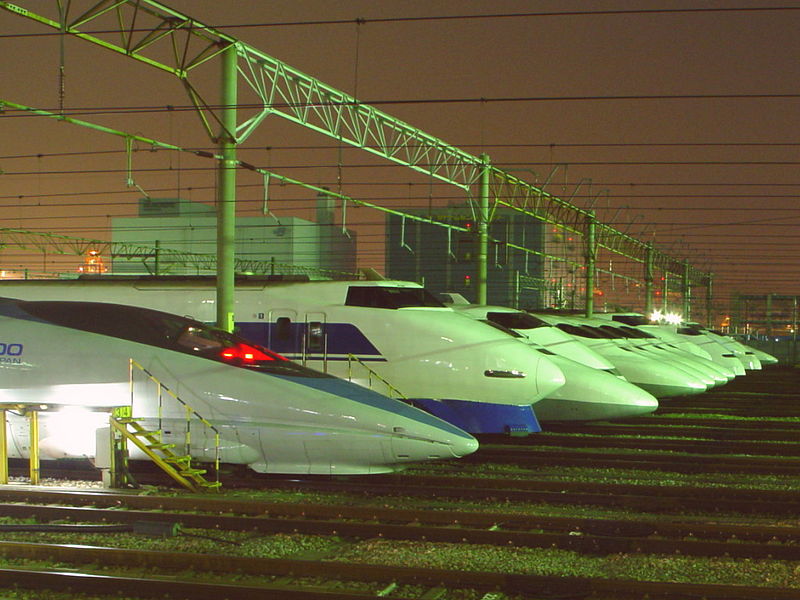
(Image: Rdb, Wikimedia Commons)
Outsiders often refer to it by its English language nickname “bullet train”, one of the fastest railways in the world. However its real name is Shinkansen, which means “new trunk line”; a reference to the separate, dedicated railway lines which had to be constructed to carry the speedy engines.
Secondly, it’s worth pointing out that there isn’t just one train known as “the bullet train” or “the shinkansen” – shinkansen is a gradually expanding network of tracks across the country, and trains often depart with high frequency. Additionally, there are several different types of shinkansen, depending on speed, destination and level of service.
Where does the Shinkansen go?
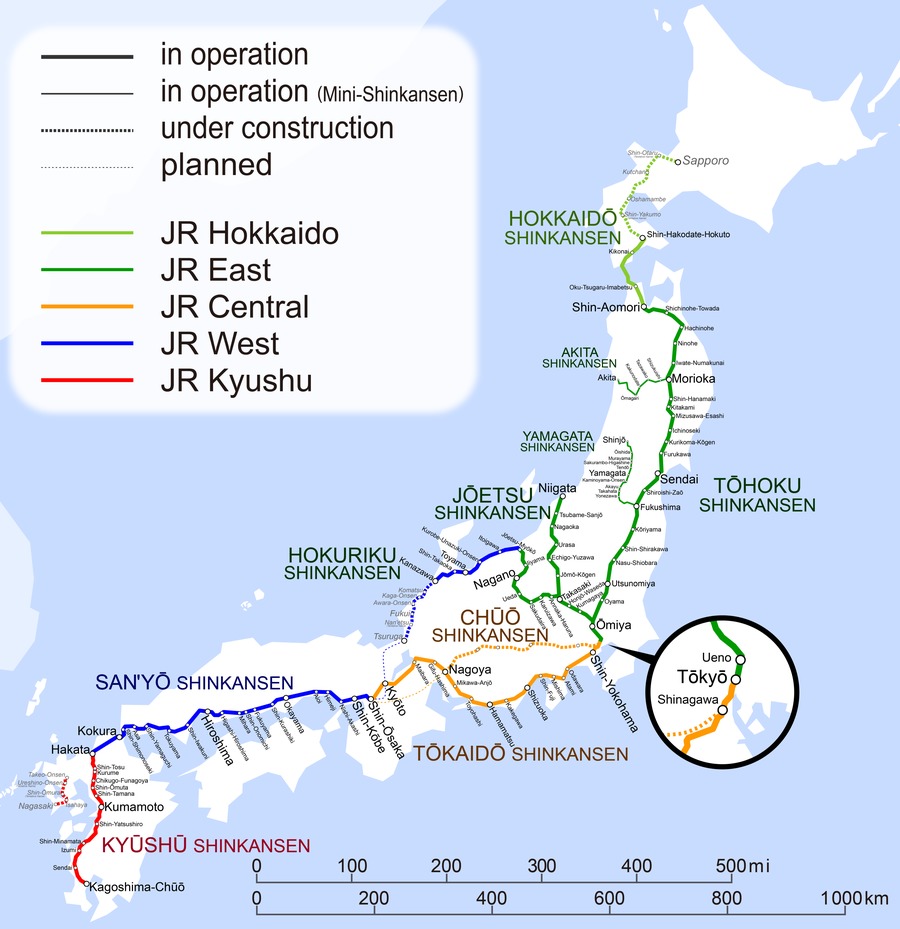
Shinkansen map (Image: Hisagi, Wikimedia Commons)
Almost everywhere on the main tourist trail. There are plenty of places not served by shinkansen – there are regular trains which operate to many other places – but most major cities are served by shinkansen.
You can’t get to much of the northern island of Hokkaido on shinkansen – the city of Hakodate is the furthest north that you can go. The island of Shikoku is serviced by regular trains, and the distant southern islands like Okinawa are obviously not part of the network.
What are the different types of Shinkansen, and what’s the difference?

Shinkansen platform in Tokyo
Not all shinkansen services are created equal. The fastest services are called Nozomi, which means ‘wish’ in Japanese. They stop at fewer intermediate stations and travel at up to 300 km/h.
Nozomi are followed by a plethora of other slightly slower services, with various names, including Hikari, Mizuho, Hayate and Hayabusa. They’re all quite fast – 250 – 275 km/h, but they stop more frequently.
After that, there are several regional shinkansen services, sometimes referred to as “mini shinkansen” – these are usually slower (around 200km/h) and are older tracks that were converted, rather than specially-built shinkansen lines.
The onboard service among all shinkansen is comparable, the major difference is speed and stopping patterns.
Names like “Nozomi” and “Hayate” refer to the train’s schedule, but there are different types of engines too – although that won’t bother you unless you’re a train enthusiast. Most shinkansen engines can reach the high speeds between 250 – 300km/h, and the same engine might be used for Nozomi and Hikari services – the difference is whether the driver takes it to that speed or not.
How do I get a ticket, and how much do they cost?
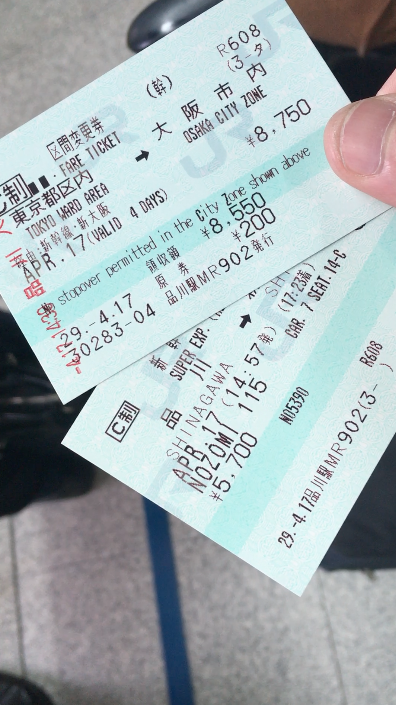
Shinkansen tickets
Here’s the real beauty of the shinkansen system – trains are usually very frequent (trains depart once every five minutes in peak times on some lines), and they do not usually require advance booking. In the station, usually near the same area as the metro tickets are sold, shinkansen tickets can be bought just minutes before departure – just turn up and go. Seats are assigned on each ticket.
The ease with which the shinkansen can be used is one of the reasons behind its success – if you live in Osaka but need to do some work in Tokyo, you can simply go to the Osaka railway station, purchase a ticket and get on a train – two and a half hours later you’ll be in Tokyo!
The exceptions to this are during festival or holiday periods when some trains might book out in advance. Also, remember that to smaller destinations there might be a longer waiting time – trains between Moriota and Akita are nowhere near as frequent as those on the Tokyo – Osaka route.

At railway stations on the central Sanyo Line (Tokyo – Osaka) clerks have this diagram to help you choose your seat!
Tickets are not cheap – many shinkansen routes compete with airlines for passengers, and generally the faster the service the more expensive it gets. Nozomi services are therefore the fastest. Below is a sample of popular shinkansen routes, timings and ticket prices;
Tokyo – Osaka: ¥13,000 – 14,000 (2 hours 40 minutes)
Tokyo – Kyoto: ¥13,000 – 14,000 (2 hours 25 minutes)
Tokyo – Hiroshima: ¥18,000 – 19,000 (4 hours)
Osaka – Kyoto: ¥1,000 – 2,000 (15 minutes)
If you have a JR Pass (Japan Rail Pass) you can use most, but not all, shinkansen services at no extra cost. The most important exception to this is the Nozomi services. Read the fine print on your JR Pass pack, and then follow station announcements to make sure you don’t take the wrong train.
What’s it like on board?
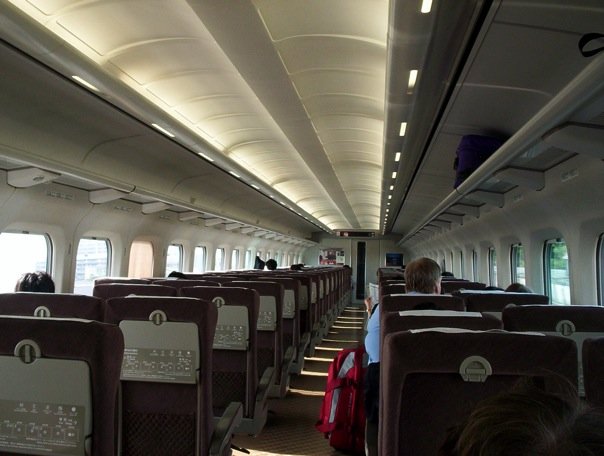
Onboard the shinkansen
The most obvious thing to note is that passengers don’t feel the speed as much as one might expect. Although travelling at 250 – 300km/h, curves in the track are taken over wide three kilometre arcs, and the tracks are slightly tilted to emulate the way a plane banks as it turns. Trees and other potential hazards near the track are cleared back a significant distance, so nothing goes screaming past the windows.
Windows are large squarish portals, and the walls are soundproofed. Inside the cabin is a quiet environment where business people work away on their laptops while others sleep or dreamily watch the countryside pass by. If you really want to get a sense of the power of the train, take a walk up to the vestibule between carriages and you’ll hear the intense hum of the machinery at work.
Some trains have a digital display of the speed at the front of the cabin, others don’t. There are digital displays and English-language announcements for stations as you approach them.
All seats face the direction of travel. Economy class is more comfortable than the average airline seat, but first class is also available at extra cost. Luggage can be stowed on the overhead rack, between seats (if there’s space) or sometimes at the end of the cabin.
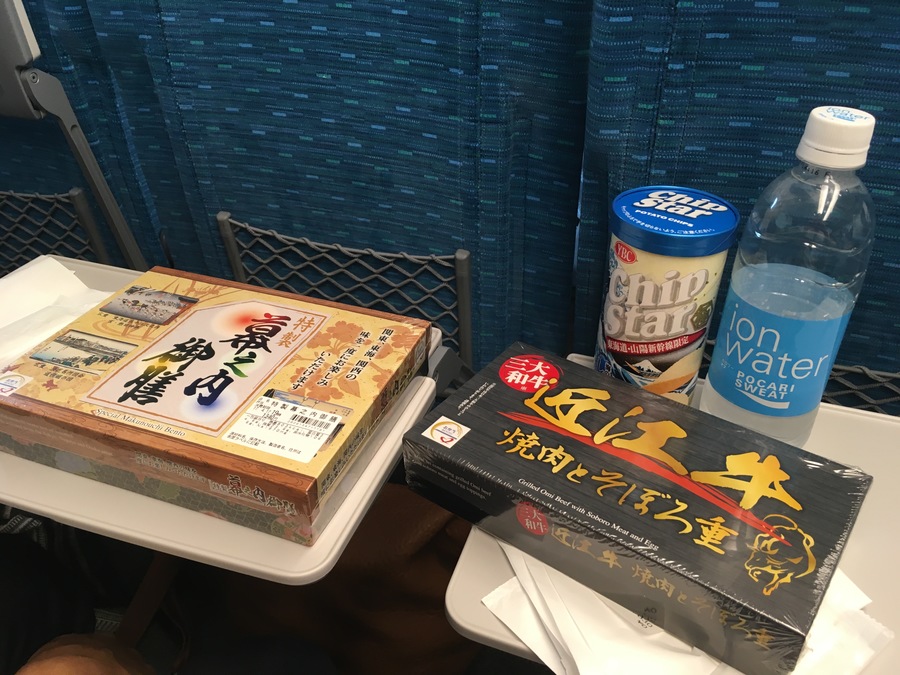
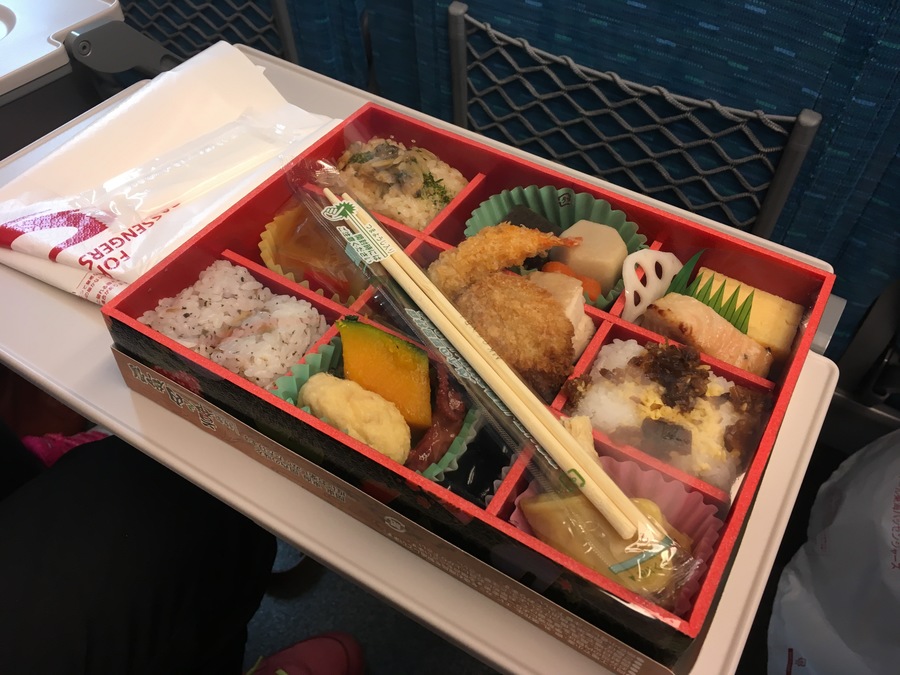
Bento box on the shinkansen

Another bento box on the shinkansen
There are toilets on board, and every twenty minutes or so a food cart gets pushed along the aisle offering bottled water, drinks, tea, biscuits, salty chips and bento. Bento, for the uninitiated, is a dainty Japanese lunch box that normally comes with some cooked rice, vegetables, one or two servings of meat or tofu, and sometimes a piece of fruit or a side salad. There might be two or three different boxes on offer, but the box packaging is always in Japanese and the steward rarely speaks English, so you just pick the one that looks most appetising. In any case the meat is usually beef and the vegetable portion normally involves mushrooms and/or seaweed. Bento boxes on shinkansen are nearly always served cold, which can be disconcerting if you’re not used to it – think of it as a cold rice and beef salad.
Is it worth it?
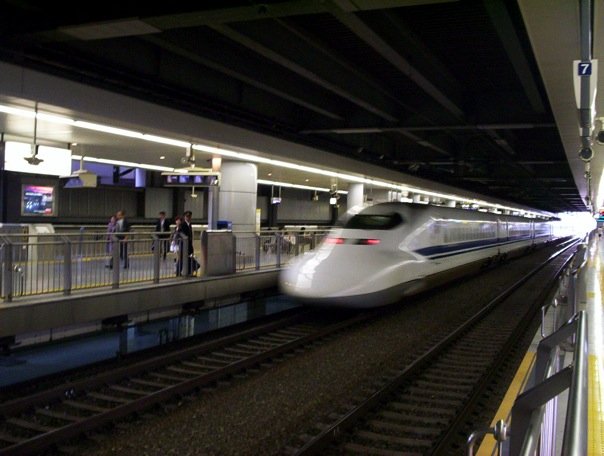
Shinkansen is often compared to air travel – which one is faster, better value for money etc? While there is no definitive answer to this, the advantages of the Shinkansen are;
- usually no need to book ahead
- it drops you to the centre of the city, unlike most airports (although many domestic flights in Japan now operate from smaller city centre airports like Tokyo Haneda, rather than the distant international airports like Tokyo Narita).
- less hassle with security, check-in etc, compared with flying
- you get to see the countryside as it zips past
- more comfortable than flying
- bragging rights
The cons are;
- the cost (it’s usually not much cheaper than flying, and the better shinkansen are sometimes more expensive than a ticket on a budget airline like Jetstar Japan or Peach)
- the time it takes to travel – it is, at the end of the day, slower than a plane
- navigating huge railway terminals – while well signposted, they tend to be a bit more labyrinthine than airports
- parking at, geting a taxi to, or figuring out the metro to land you at the right shinkansen terminal. Airports might be distant, but they don’t usually involve inner city traffic.
So here’s a simple equation to make the decision for you – when all time and expense is factored in (including getting to an airport, passing security etc), studies have shown that;
- for trips of less than 750 kilometres (like Tokyo – Osaka), shinkansen is normally better value for money and time
- for trips between 800 – 1000 kilometres (like Tokyo – Hiroshima, or Tokyo – Hakata), shinkansen and airlines compete, so it’s worth doing your research.
- for trips over 1000 kilometres, air is usually the quicker and cheaper option.
Given that equation, it starts to make sense why certain larger countries (like Australia) have been so reluctant to invest in bullet train infrastructure between, say, Sydney and Melbourne.
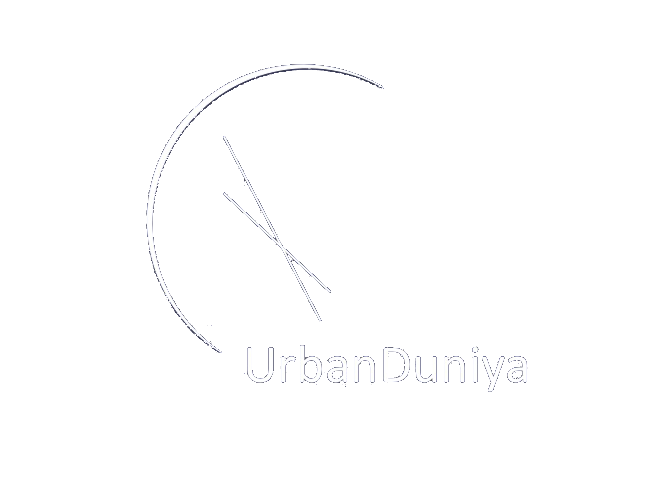



Travelling by a high-speed train seems like an exceptional experience, Tim! The bullet train in Japan seems truly astonishing and I would love to have a ride in it one day! 🙂
You have to go, Agness!! I hope you’re having a great time in Thailand!!!
dont forget shinkansen usually take you a lot closer to the centre of town than flights will. Best train system in the world.
Absolutely! I agree!